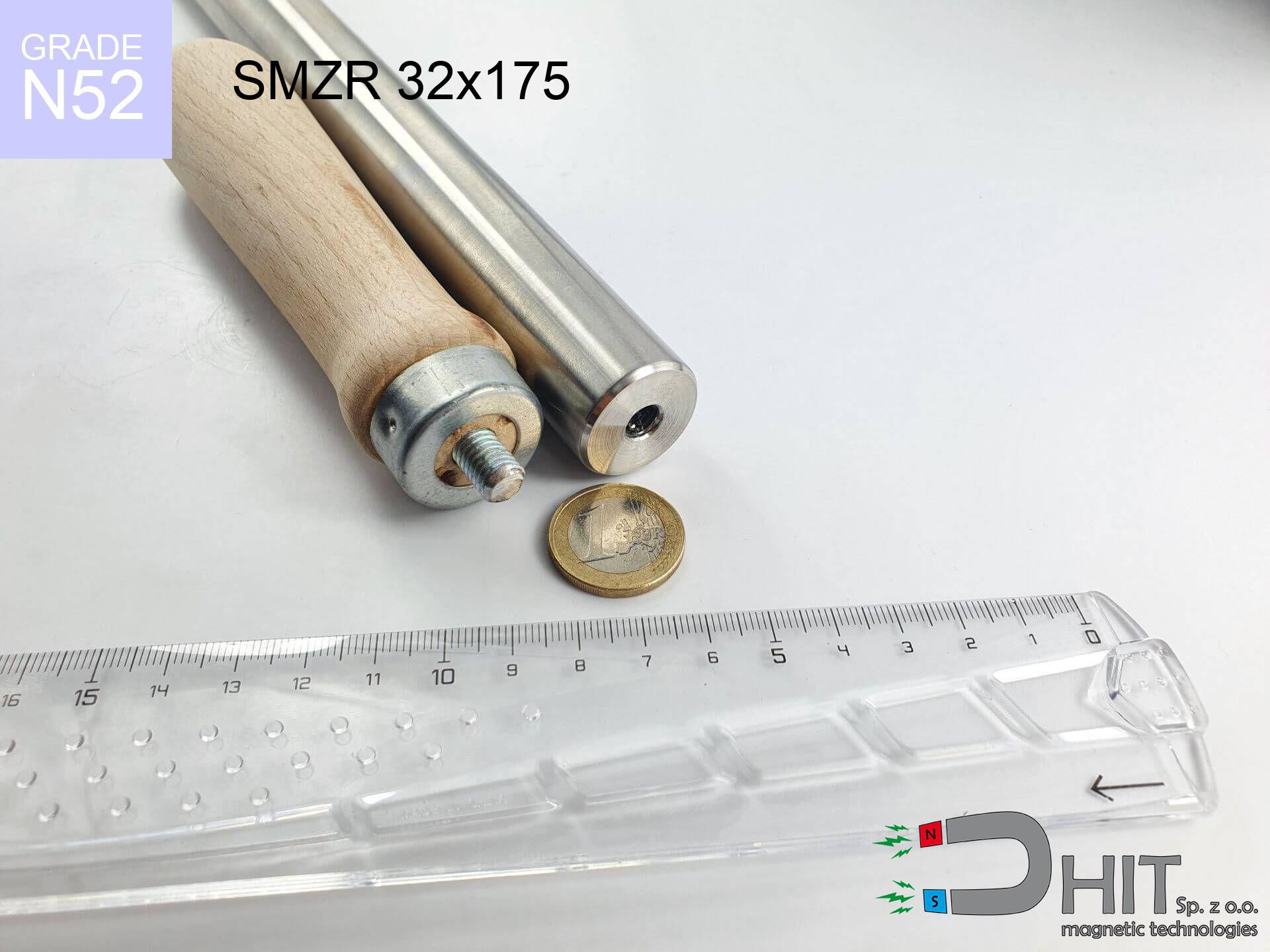SM 18x175 [2xM5] / N42 - magnetic separator
magnetic separator
Catalog no 130272
GTIN: 5906301812746
Diameter Ø [±0,1 mm]
18 mm
Height [±0,1 mm]
175 mm
Weight
0.01 g
387.45 ZŁ with VAT / pcs + price for transport
315.00 ZŁ net + 23% VAT / pcs
bulk discounts:
Need more?Not sure about your choice?
Give us a call
+48 22 499 98 98
alternatively drop us a message via
form
through our site.
Weight along with appearance of neodymium magnets can be checked on our
magnetic calculator.
Orders submitted before 14:00 will be dispatched today!
SM 18x175 [2xM5] / N42 - magnetic separator
Magnetic properties of material N42
Physical properties of NdFeB
Shopping tips
Advantages as well as disadvantages of neodymium magnets NdFeB.
In addition to their remarkable field intensity, neodymium magnets offer the following advantages:
- Their magnetic field is maintained, and after approximately 10 years, it drops only by ~1% (theoretically),
- They are very resistant to demagnetization caused by external field interference,
- Thanks to the glossy finish and silver coating, they have an visually attractive appearance,
- The outer field strength of the magnet shows advanced magnetic properties,
- Thanks to their enhanced temperature resistance, they can operate (depending on the geometry) even at temperatures up to 230°C or more,
- With the option for tailored forming and targeted design, these magnets can be produced in various shapes and sizes, greatly improving engineering flexibility,
- Significant impact in advanced technical fields – they are used in HDDs, electric drives, clinical machines as well as high-tech tools,
- Compactness – despite their small size, they deliver powerful magnetism, making them ideal for precision applications
Disadvantages of magnetic elements:
- They may fracture when subjected to a heavy impact. If the magnets are exposed to mechanical hits, it is advisable to use in a protective enclosure. The steel housing, in the form of a holder, protects the magnet from breakage while also reinforces its overall strength,
- High temperatures may significantly reduce the magnetic power of neodymium magnets. Typically, above 80°C, they experience permanent deterioration in performance (depending on height). To prevent this, we offer heat-resistant magnets marked [AH], capable of working up to 230°C, which makes them perfect for high-temperature use,
- Due to corrosion risk in humid conditions, it is advisable to use sealed magnets made of plastic for outdoor use,
- The use of a protective casing or external holder is recommended, since machining threads in neodymium magnets is not feasible,
- Health risk related to magnet particles may arise, especially if swallowed, which is significant in the context of child safety. It should also be noted that tiny components from these magnets have the potential to hinder health screening if inside the body,
- High unit cost – neodymium magnets are more expensive than other types of magnets (e.g., ferrite), which may limit large-scale applications
Handle with Care: Neodymium Magnets
Keep neodymium magnets away from people with pacemakers.
In the case of neodymium magnets, there is a strong magnetic field. As a result, it interferes with the operation of a heart pacemaker. However, if the magnetic field does not affect the device, it can damage its components or deactivate the device when it is in a magnetic field.
Neodymium magnets can become demagnetized at high temperatures.
Even though magnets have been found to maintain their efficacy up to temperatures of 80°C or 175°F, it's essential to consider that this threshold may fluctuate depending on the magnet's type, configuration, and intended usage.
The magnet is coated with nickel. Therefore, exercise caution if you have an allergy.
Studies clearly indicate a small percentage of people who suffer from metal allergies such as nickel. An allergic reaction often manifests as skin redness and rash. If you have a nickel allergy, try wearing gloves or avoid direct contact with nickel-plated neodymium magnets.
It is important to keep neodymium magnets away from youngest children.
Not all neodymium magnets are toys, so do not let children play with them. In such a situation, surgery is necessary to remove them. In the worst case scenario, it can result in death.
Neodymium magnetic are especially fragile, resulting in damage.
Neodymium magnets are characterized by significant fragility. Magnets made of neodymium are made of metal and coated with a shiny nickel, but they are not as durable as steel. At the moment of collision between the magnets, small metal fragments can be dispersed in different directions.
Under no circumstances should neodymium magnets be placed near a computer HDD, TV, and wallet.
Strong fields generated by neodymium magnets can damage magnetic storage media such as floppy disks, credit cards, magnetic ID cards, cassette tapes, video tapes, or other similar devices. They can also damage televisions, VCRs, computer monitors, and CRT displays. Avoid placing neodymium magnets in close proximity to electronic devices.
Dust and powder from neodymium magnets are highly flammable.
Avoid drilling or mechanical processing of neodymium magnets. Once crushed into fine powder or dust, this material becomes highly flammable.
Do not bring neodymium magnets close to GPS and smartphones.
Neodymium magnets generate intense magnetic fields that interfere with magnetometers and compasses used in navigation, as well as internal compasses of smartphones and GPS devices.
Neodymium magnets are the most powerful, most remarkable magnets on the planet, and the surprising force between them can shock you at first.
Please review the information on how to handle neodymium magnets and avoid significant harm to your body, as well as prevent unintentional damage to the magnets.
Magnets will attract to each other, so remember not to allow them to pinch together without control or place your fingers in their path.
In the situation of holding a finger in the path of a neodymium magnet, in such a case, a cut or even a fracture may occur.
Safety precautions!
To raise awareness of why neodymium magnets are so dangerous, read the article titled How dangerous are powerful neodymium magnets?.

![practical, strong magnetic roller SM 18x175 [2xM5] / N42 practical, strong magnetic roller SM 18x175 [2xM5] / N42](https://cdn3.dhit.pl/graphics/banners/magnet.webp)
![SM 18x175 [2xM5] / N42 - magnetic separator](https://cdn3.dhit.pl/graphics/products/sm-18x175-2xm5-rov.jpg)



![SM 25x225 [2xM8] / N52 - magnetic separator SM 25x225 [2xM8] / N52 - magnetic separator](https://cdn3.dhit.pl/graphics/products/sm-25x225-2xm8-lod.jpg)

